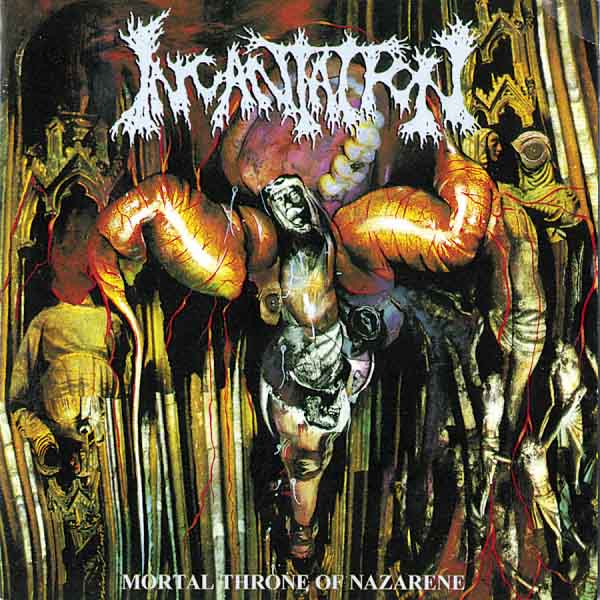When people mention death metal bands, they cite a short canon of Morbid Angel and Deicide. If this album had been of higher quality, Incantation would be the third on that list. Following the immensely powerful Onward to Golgotha, Incantation stood poised to take over American death metal with their unique sound and quality songwriting. On Mortal Throne of Nazarene, the band took a huge dive into a lesser category and were as a result bypassed by many fans.
Many factors may have influenced this decision. Relapse Records was at the time trying to grow large enough to be on par with bigger labels like Earache and Roadrunner. Incantation despite having a stable line-up benefited from the contributions of past members such as Paul Ledney and influences from other East Coast bands. Immense pressure was brought to bear on the band to make another Onward to Golgotha two years after their first album, during a time when rumored internal friction caused lineup changes and the semi-permanent departure of drummer Jim Roe and loss of bassist Ronnie Deo. As a result, those two years may not have represented the length of time the band had to write, incubate and revise this album.
Immediately noticeable is the primal flaw of this album: chord progressions and melodies used in fills are more obvious, or cut more exactly from scale patterns, which gives it an almost sing-song vibe at times. Rhythms are less fully integrated which causes the band to attempt ambitious forms but then fall back on relatively brown-wrapper metal tropes. The band incorporated many of these tracks with rhythm re-written on their followup EP The Forsaken Mourning of Angelic Anguish where changes in pacing and arrangement made them far more effective. This confirms much of what listeners felt, which was that Mortal Throne of Nazarene may have been completely written but it did not undergo the revision, editing and incubation process that mellowed Onward to Golgotha into a finely honed shape where no detail was extraneous and all parts worked together toward the impression conveyed by each song. Relapse promoted this album as more “technical,” back when that buzzword was new, meaning that there are additional chord shapes used and some difficult tempo changes, but it was not as well-integrated nor as purposeful.
Mortal Throne of Nazarene overflows with good ideas but they do not work together toward an end, and parts of it like the last half of Suffocation’s Breeding the Spawn sound like chromatic fills in regular rhythms that the band intended to revise later into full riffs with unique modality and rhythms more carefully enwrapped in the need of each song. Vocals are stunning as usual, production is much clearer, and individual performances show musical maturation and the type of learning that comes from having influences among historically important metal bands. Some songs remain standouts even in their partial form like “The Ibex Moon” and “Abolishment of Immaculate Serenity,” which shows the band perhaps coming together at the end of their song process, or having intended those since the beginning to be the bedrock of this album but having been lacking time to make the rest. But unlike Schubert’s Unfinished Symphony, this album is not just unfinished but incomplete, and the result shows in the mixture of random and predictable that obscures otherwise powerful songs.
3 CommentsTags: 1994, death metal, incantation, mortal throne of nazarene, relapse, relapse records, review


